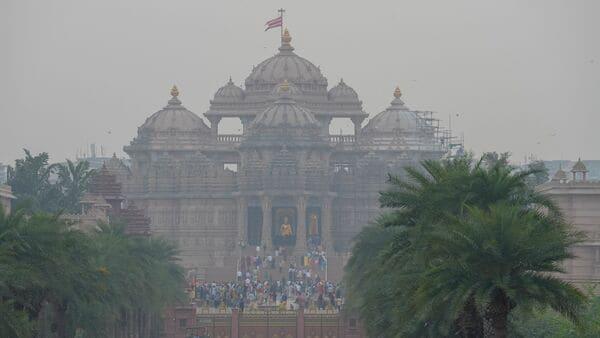
Delhi's Air Quality Worsens Likely To Deteriorate To 'Severe' Category In Next Six Days
Delhi's air quality index (AQI) reading dropped to 364 on Wednesday from 327 on Tuesday. According to the Central Pollution Control Board (CPCB), a reading between 301 and 400 falls in the 'very poor' category, and beyond that is classified as 'severe'.
The worsening of Delhi's air quality is due to unfavourable meteorological conditions, SAFAR said in its latest bulletin.
Due to low wind speeds every winter, toxic smog-the noxious mix of vehicular pollution, construction dust, and smoke from stubble burning-blankets the national capital. It's worsened by the bursting of firecrackers during the festive season leading up to Diwali.
Following the rising pollution levels, an 11-point action plan, as per Stage II of the Graded Response Action Plan (GRAP), was put into force on Monday.
GRAP is a set of emergency measures to control air pollution, implemented stage-wise by the Commission for Air Quality Management in the national capital region.
In Stage II, agencies, among other steps, carry out mechanical/vacuum sweeping, water sprinkling, and strict enforcement of dust control measures.
As a preventative measure, the Delhi Pollution Control Committee has completely banned the manufacturing, storage, sale, and use of all types of firecrackers in the national capital until 1 January.
Authorities in Punjab have also banned firecrackers. In Haryana's Gurugram, green crackers are allowed during Diwali celebrations.
The CSIR-National Environmental Engineering Research Institute defines green crackers as firecrackers made with a reduced shell size, without ash, and/or with additives such as dust suppressants to reduce emissions with specific reference to particulate matter. These crackers come without barium compounds, a metal oxide that contributes to air and noise pollution and gives them a green colour.
CREAMS-Indian Agricultural Research Institute, which monitors satellite data on crop residue burning, said in its Wednesday bulletin that stubble burning cases or fire incidents fell to 4,262 in neighbouring states like Punjab, Haryana, Uttar Pradesh, Rajasthan, and Madhya Pradesh between 15 September and 23 October, from 4,693 cases a year ago.
Smoke from post-harvest waste burning causes a surge in respiratory illness. People also experience burning eyes, heart ailments, sore throats, and skin allergies, among other health problems.
According to an analysis by the Council on Energy, Environment and Water (CEEW), stubble burning contributes up to 30% to PM 2.5 levels in Delhi between 15 October and 15 November. Most of this contribution comes during the last week of October and the first week of November. Therefore, the current contribution of stubble burning is low.
Data from the Air Quality Decision Support System puts its contribution at around 8% on 22 October.
“Apart from stubble burning, Delhi's air pollution also comes from transport, dust, biomass and waste burning, among others. Moreover, meteorology has played a role in the deterioration of Delhi's air quality over the last few days,” said Abhishek Kar, senior programme lead, CEEW.“While the minimum temperatures hovered between 21 and 22°C over the last few days, the wind speed dropped below 1 m/s. This led to a weaker dispersion of pollutants over the capital.”
Legal Disclaimer:
MENAFN provides the
information “as is” without warranty of any kind. We do not accept
any responsibility or liability for the accuracy, content, images,
videos, licenses, completeness, legality, or reliability of the information
contained in this article. If you have any complaints or copyright
issues related to this article, kindly contact the provider above.

















Comments
No comment